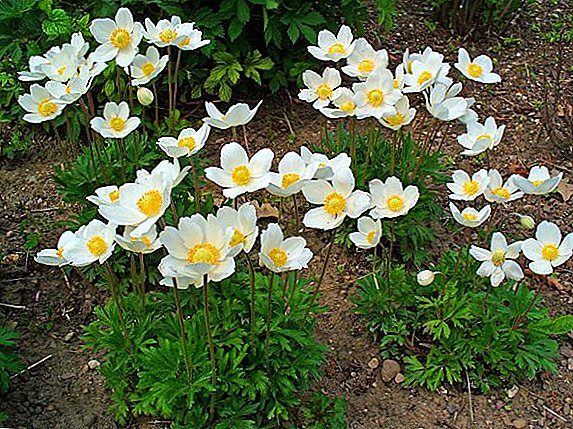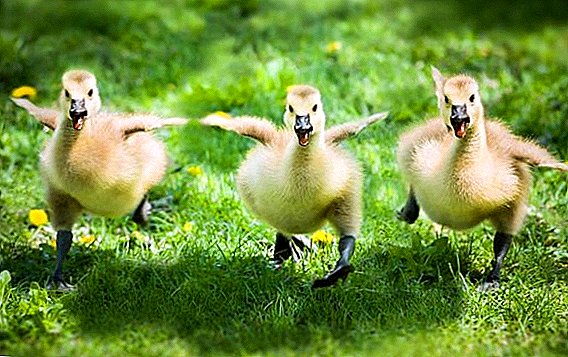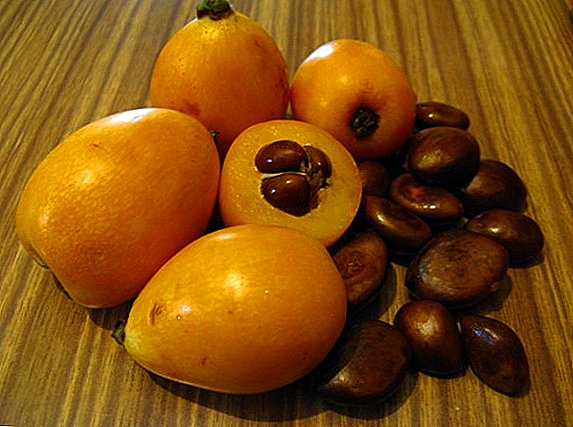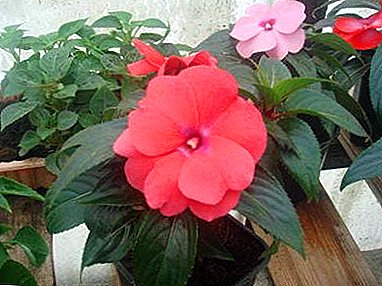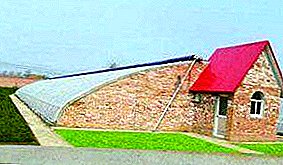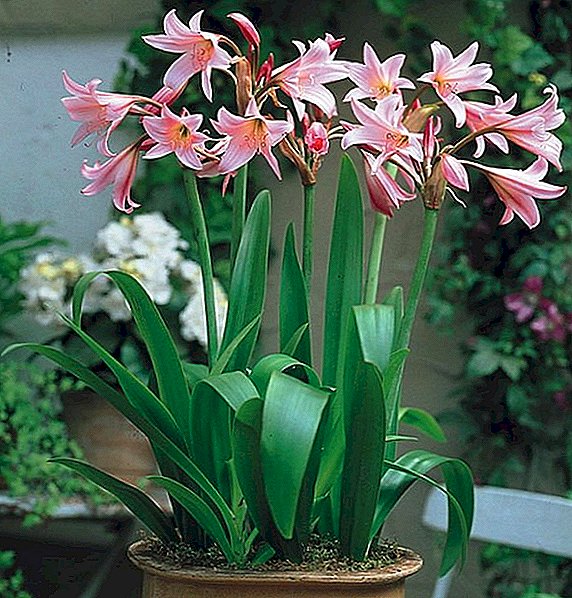
Choosing varieties of plums for their plot, gardeners of the middle lane primarily pay attention to winter hardiness and good yield.
These qualities can boast of many plums. Far from the last among them is the Eurasia 21, which gives wonderful taste and fragrant fruits.
However, the variety has its own characteristics that must be considered when growing.
Plum "Eurasia 21": description of the variety
"Eurasia 21" is table drain, ripening in the early stages and belonging to the group of home-made plum varieties. This is a large tree about 5 m tall. with a semi-sprawling and not too thick crown. The trunk and bark of its branches are painted gray. Due to its large size, the variety is most often grown on low-growing stock.
The rounded fruits of "Eurasia 21" are very beautiful in appearance. Their thin peel colored dark blue with a burgundy shade and completely covered with a bluish wax bloom.
 Minimum fruit weight - 23 g, maximum - 33 g Yellowish orange and very juicy flesh it has a soft and loose structure and is characterized by a sweet-sour taste with a pronounced aroma.
Minimum fruit weight - 23 g, maximum - 33 g Yellowish orange and very juicy flesh it has a soft and loose structure and is characterized by a sweet-sour taste with a pronounced aroma.
The amount of sugars in fruits is 7.02%, and the acidity is 2.7%. The bones are small and poorly lagging behind the pulp..
Plum "Eurasia 21" is grown for eating fresh fruits and their canning.
The fruit produces very tasty juices with pulp, jams, jams, jam, confiture. However, due to the loose structure of the pulp, this particular variety of plums is not suitable for the production of compotes.
A photo
With plum varieties "Eurasia 21" more details can be found in the photo below:




Breeding history and breeding region
"Eurasia 21" was derived by scientists of the Voronezh Agrarian University. It was obtained using complex interspecific hybridization.
American, East Asian, Chinese and home plums, as well as plum and apricot plums (Simon) took part in the formation of the variety.
The authors of "Eurasia 21" - AG breeders. Turovtseva and A.N. Venyaminov.
After state tests in 1986, the variety was introduced into the State Register and recommended for cultivation in the Central Black Earth regions of Russia. Also, "Eurasia 21" can often be found in the gardens of the central belt and the suburbs.
Specifications
The variety is considered skoroplodny. He begins to bear fruit in the 4th year of life. Crops "Eurasia 21" gives excellent, but not stable.
If May is cold and with a lot of rain, it blooms poorly and almost does not set fruit.
However, in favorable years it is possible to collect up to 50 kg of plums from one tree and even more. Ripens harvest plums in early or mid-August.
 Winter hardiness "Eurasia 21" is quite high compared to other varieties of home plums.
Winter hardiness "Eurasia 21" is quite high compared to other varieties of home plums.
Its wood and flower buds are sufficiently resistant to freezing, and the roots are able to withstand temperatures up to -20 ° C.
"Eurasia 21" not bad propagated by green cutting - rooted almost 70%.
It is also used as a seed and partially clone stock. In addition, the "Eurasia 21" actively used for breeding new varieties.
Reference! The variety is samobfruitny. Pollination requires varieties from the group of domestic plums that bloom simultaneously with Eurasia 21. "Memory of Timiryazev", "Beacon", "Volga Beauty", "Skorospelka Red" will perfectly suit.
Planting and care
It is best to plant the Eurasia 21 plum in the spring, when the trees have not yet swelled buds. A place for seedlings should be chosen sublime, bright and well warmed by the sun.
Plum prefers moisture-absorbing and breathable soil with neutral acidity. Ideally, this there must be light loamy ground. It is desirable that groundwater in the area flowed at a depth of at least 2 meters from the surface of the earth.
A landing pit for plums is prepared in two or three weeks or in the fall. Its depth should be from 60 to 70 cm, and diameter - from 70 to 80.
It is recommended to loosen the bottom too tight with a crowbar or a shovel to a depth of about 25 cm.
Next you need prepare a nutritious fertile mixture for seedlings. One of the variants of its composition:
- top sod layer;
- about 3 buckets of humus;
- 200 grams of superphosphate;
- 2 or 3 tbsp. l potassium sulfate;
- 3 tbsp. l urea;
- 250-300 grams of "Berries";
- about 300 grams of dolomite flour.
Stir the mixture thoroughly and fill the pit with it.
 Then begins the process of planting seedlings.
Then begins the process of planting seedlings.
In the middle of the pit, a peg is set for tying and an earthen mound is poured. They put a tree on it, straighten the roots and fill the pit with the remaining fertile soil.
The sapling at this moment is slightly shaken so that all the voids between the roots are filled with soil.
It is important to ensure that the root neck of the tree is 5 or 6 cm high above the surface of the buried pit.
At the end of the work, the ground around the tree is tamped down and well sprinkled with 2-3 buckets of water. Plums are tied up to a peg, and the area around the trunk is mulched with sawdust or humus to retain moisture.
In the first season after planting plum fertilizer is not necessary. In the second year and in the subsequent up to fruiting, urea is applied at the rate of not more than 20 g per square meter of tree trunks. Fruiting plums in the spring they feed with urea and nitrogen fertilizers, and in the autumn period with potash and phosphate fertilizers..
If the land on the site is fertile, organic matter is introduced no more than once every three years. However, the order of fertilizing each gardener chooses at its discretion, based on climatic conditions, soil composition and state of health of trees.
For plum correct watering is very important, because she loves moisture more than other fruit crops. From spring to August it is required to water the tree at least 4-5 times: the first time before blooming, and then with an interval of about 20 days.
At one drain requires at least 5 buckets of water. When watering a tree, do not be zealous - waterlogging of the soil is detrimental to the plant and leads to cracking and dropping of fruits.
Loosening the soil around the plum is no less important than watering. It is necessary to keep pristvolny circles clean, in time to get rid of weeds and to mulch the ground.
Plum prone to root growth, which inhibits the plant and contributes to lower yields. To eliminate this negative factor, the ground is pounded at the base of the trunk and the shoots are completely cut. Such a procedure should be carried out at least 4 times over the summer.
 In the first years after planting, a formative pruning pruning is carried out. In the one-year-old tree, 5 to 7 skeletal branches are left and they are shortened by a third for 3 or 4 years in spring.
In the first years after planting, a formative pruning pruning is carried out. In the one-year-old tree, 5 to 7 skeletal branches are left and they are shortened by a third for 3 or 4 years in spring.
After the entry of the plum at the time of fruiting over the highest and most developed branch pruned conductor. In this way a crown in the shape of a bowl is formed, best of all illuminated by the sun.
In the future, every spring sanitary and rejuvenating pruning pruning is carried out. The crown is thinned, frozen, dry and diseased branches are removed. Also cut branches growing inward and forks, forming a right angle. It is not recommended to remove short branches about 30 cm in length.
Diseases and pests
"Eurasia 21" has moderate disease resistance. Fruit rot (moniliosis) and cluster sporosis are most dangerous for plum trees.
Prevention measures are important to protect the crop from fruit rot.. In the autumn, the soil is digged along with the foliage, the affected shoots and branches are removed, and the carrion is collected and destroyed. Before the flowering period and after the trees are treated with copper oxide or Bordeaux liquids.
These same measures help protect the plum from asperiasis or perforated spotting.. This disease is expressed by the appearance of brown spots on the leaves and fruits.
The most common pests of "Eurasia 21" - plum sawfly, moth and aphid. Wintering in the soil sawfly destroyed using spring digging the earth around the tree. If the enemy has not retreated, you can destroy it with "Karbofos", "Cyanox" or "Iskra", before and after flowering, treating trees with drugs.
 With moth help to cope: "Konfidor", "Benzophosphate", "Aktara". Spraying of trees should be carried out 5 or 6 days after flowering.
With moth help to cope: "Konfidor", "Benzophosphate", "Aktara". Spraying of trees should be carried out 5 or 6 days after flowering.
In mid-June, caterpillar moths are harvested using hunting belts. Caterpillars leaving for soil pupation, effectively destroyed by regular loosening of the soil every 8-10 days.
Aphids work fine in small clusters. folk remedies in the form of infusion of garlic, onions, wormwood, celandine or ash. The hordes of this small pest can be destroyed only with the help of insecticides "Decis", "Benzophosphate", etc.
Of course, "Eurasia 21" has some drawbacks that should be considered when choosing. However, the variety also has a number of advantages, with proper care, allowing to obtain high yields of tasty and attractive plums.




